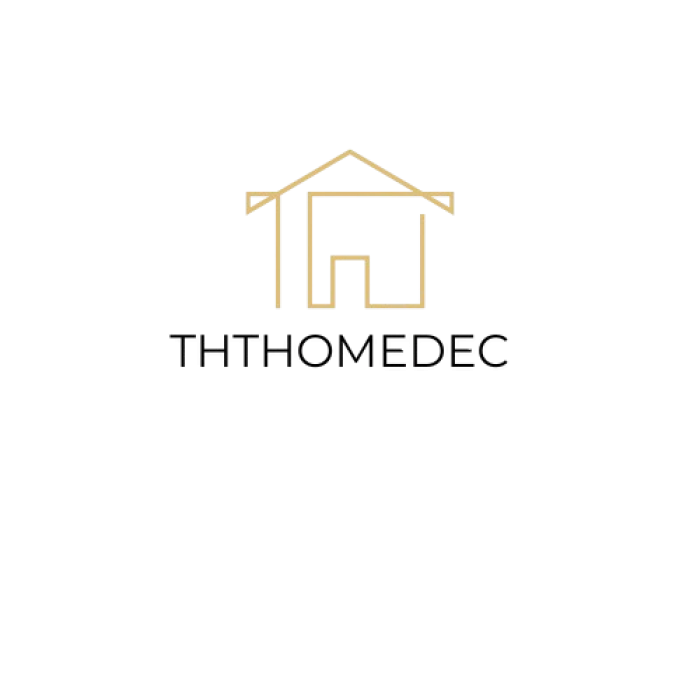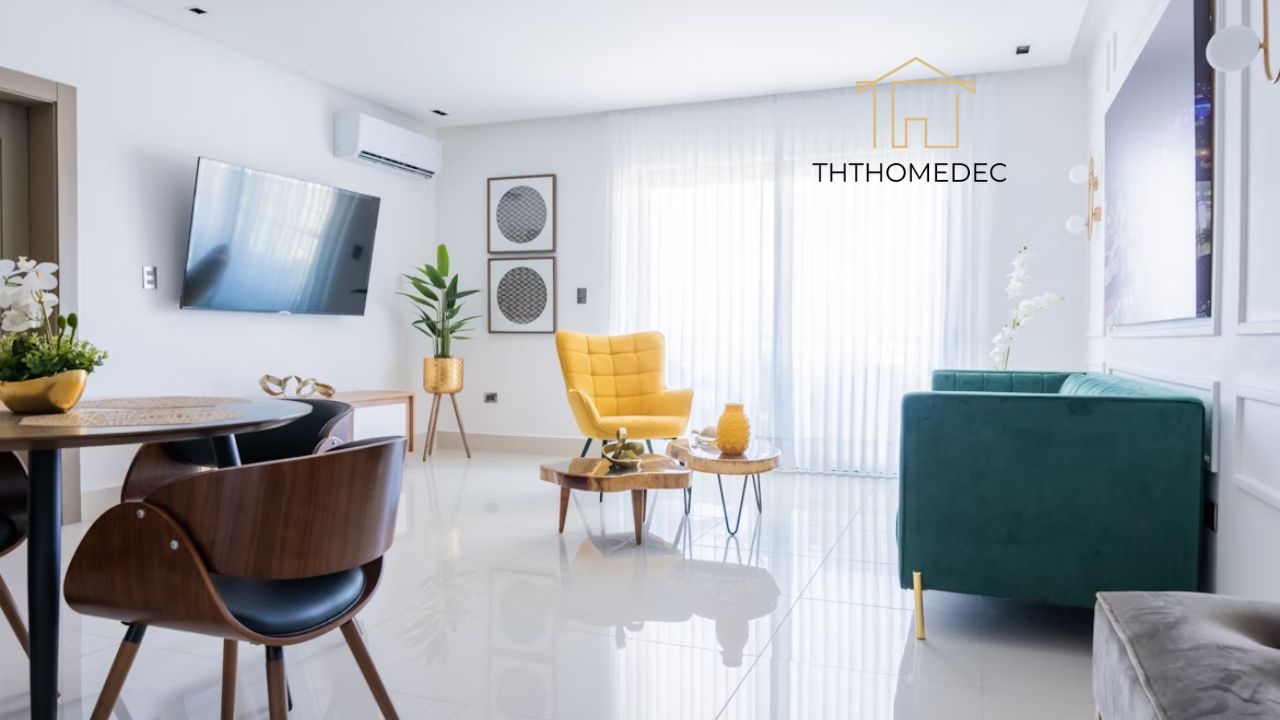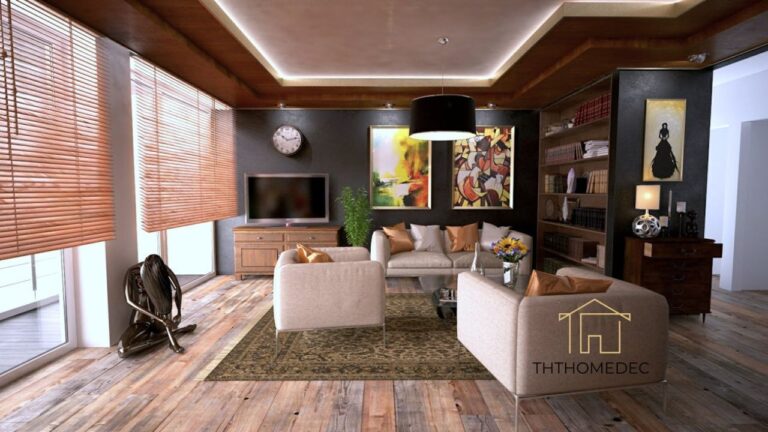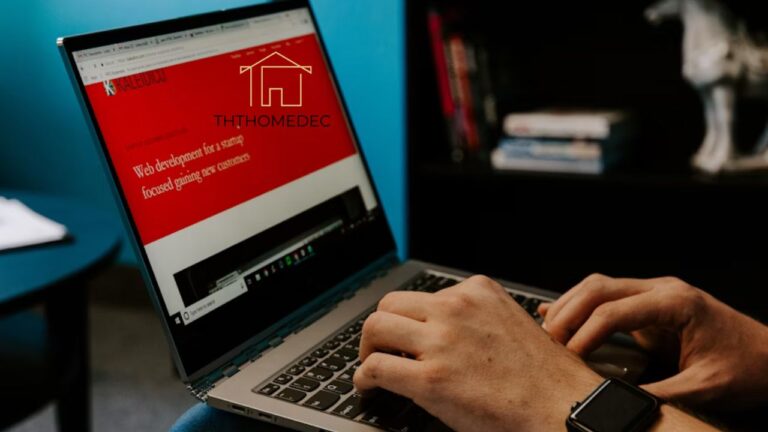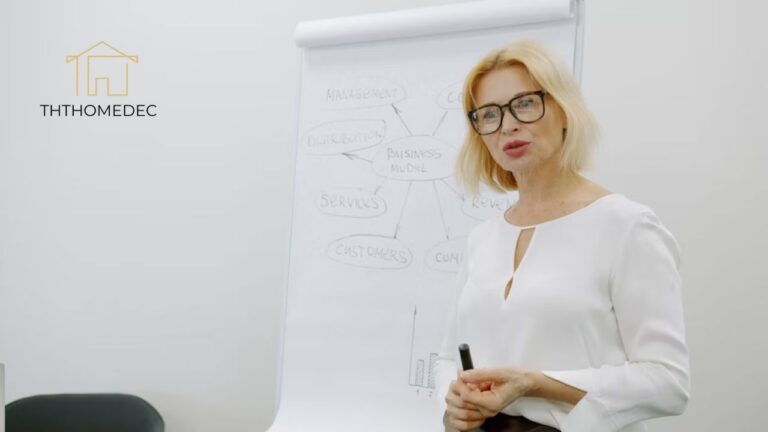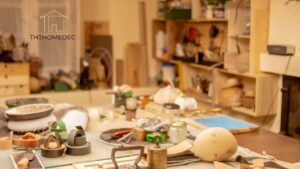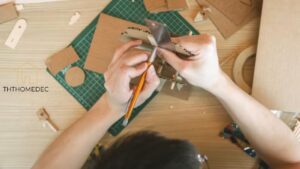Have you ever scrolled through a design magazine and felt a pang of envy, wishing you could create such breathtaking spaces in your own home?If you’re looking for guidance on How to Be Better at Interior Design with Mintpaldecor is an incredible resource to transform that wish into reality. It’s not about having an innate “eye for design”; it’s about learning the principles, understanding your own style, and using the right tools to bring your vision to life. This guide will walk you through everything you need to know.
Creating a beautiful and functional home is an deeply rewarding journey. It’s about more than just aesthetics; it’s about crafting an environment that reflects your personality and supports your lifestyle. With the right approach, anyone can develop their skills. We’ll explore fundamental design principles, the power of planning, and how platforms like Mintpaldecor can be your secret weapon.
Your Interior Design Journey at a Glance
| Feature | Description | User Rating | Key Benefit |
|---|---|---|---|
| Mintpaldecor | An all-in-one platform for design inspiration, tools, and professional connections. | 4.8/5 Stars | Streamlines the entire design process from concept to completion. |
| Mood Boards | A digital tool to visually organize colors, textures, and furniture ideas. | 4.9/5 Stars | Helps you define and refine your aesthetic before making purchases. |
| Room Planner | A 3D visualization tool to map out furniture placement and scale. | 4.7/5 Stars | Prevents costly mistakes by ensuring everything fits perfectly. |
| Expert Consultations | Access to professional interior designers for personalized advice. | 4.9/5 Stars | Provides expert guidance to overcome design challenges. |
Unlocking Your Inner Designer: The Foundation
Before you start buying furniture or painting walls, it’s crucial to build a solid foundation of design knowledge. This is the first and most important step in understanding how to be better at interior design, Mintpaldecor advocates this structured approach. It prevents overwhelming feelings and ensures a cohesive final result.
Discovering Your Personal Style
Your home should be a reflection of you. But how do you translate your personality into a design style? The process can be incredibly fun and enlightening. Don’t rush this part; it’s the heart of your entire project.
Start by gathering inspiration. Create a dedicated Pinterest board or use Mintpaldecor’s built-in inspiration galleries. Save images that make you feel something—a sense of calm, excitement, or comfort. Don’t overthink it at first; just collect what you love.
After you’ve gathered a good number of images, look for common threads. Are you drawn to:
- Minimalist: Clean lines, neutral colors, and uncluttered spaces.
- Bohemian: Eclectic patterns, rich textures, and a collection of worldly objects.
- Modern Farmhouse: Rustic woods, neutral palettes, and cozy, practical elements.
- Mid-Century Modern: Organic shapes, simple functionality, and a connection to nature.
- Industrial: Exposed brick, raw materials like metal and concrete, and open-plan layouts.
Identifying your dominant style (or a hybrid of two or three) gives you a clear direction. It makes every subsequent decision, from choosing a sofa to picking out a light fixture, much simpler. Remember, your style can evolve, but having a starting point is key.
Mastering the Art of the Mood Board
Once you have a sense of your style, a mood board is your next essential tool. This is where your abstract ideas start to become a concrete plan. Think of it as a visual collage for your room. It’s a technique professionals swear by, and it’s a non-negotiable step if you want to know how to be better at interior design. Mintpaldecor offers a fantastic digital mood board tool that makes this process seamless.
Your mood board should include:
- Color Palette: The main colors and accent shades you plan to use.
- Textures: Images of materials like velvet, linen, wood, metal, and leather.
- Furniture: Key pieces you love, like a specific sofa or dining table.
- Lighting: Examples of chandeliers, floor lamps, or sconces that fit your vision.
- Art & Decor: Pieces that capture the overall feeling you want to achieve.
When you see all these elements together, you can immediately spot what works and what doesn’t. Does that bold wallpaper clash with your patterned rug? Is the color palette feeling too cold? A mood board allows you to make these adjustments digitally, saving you from expensive and frustrating real-world mistakes.
The Seven Elements of Interior Design
To truly elevate your skills, you need to understand the fundamental building blocks that every great designer uses. These seven elements are the language of interior design. Learning to speak it fluently is central to figuring out how to be better at interior design. Mintpaldecor has extensive guides on each, but here is a foundational overview.
1. Space: The Canvas of Your Design
Space is the most basic element. It refers to the physical boundaries of your room. You’ll work with two types of space:
- Positive Space: The area occupied by objects, like furniture, lamps, and decor.
- Negative Space: The empty area around and between objects, like the floor, walls, and the gap between a sofa and a chair.
A common mistake amateurs make is filling every inch of a room. Negative space is not wasted space; it’s essential for creating balance, preventing a cluttered feel, and allowing your key pieces to shine. A well-designed room has a harmonious relationship between its positive and negative space.
2. Line: Guiding the Eye
Lines are present in every room—in the form of tables, windows, doorways, and even patterns on a rug. They have a powerful psychological effect and can be used to direct the eye and create different feelings.
- Horizontal lines (found in tables, sofas) create a sense of stability, grounding, and calm.
- Vertical lines (found in doorways, tall bookshelves) create a feeling of height, freedom, and grandeur.
- Dynamic lines (diagonal or curved) create energy, movement, and visual interest.
Use lines intentionally. If you want a room to feel taller, add full-length curtains or a tall, slender floor lamp. For a serene bedroom, emphasize horizontal lines with a wide headboard and low-profile dressers. This is a subtle but powerful secret for those learning how to be better at interior design; Mintpaldecor experts often highlight this principle.
3. Form: Bringing Shape to Your Space
Form refers to the shape of any three-dimensional object in your room. It can be geometric (like a square coffee table) or organic (like a curved sofa or a live-edge wooden table).
A successful design often incorporates a mix of forms. A room filled with only square, rigid shapes can feel sterile, while a room with only soft, curved forms might lack structure. The interplay between different shapes adds depth and sophistication. Juxtaposing a round mirror above a rectangular console table is a classic example of using form effectively.
4. Light: Setting the Mood
Light is one of the most transformative elements in design. It affects not only visibility but also mood, color perception, and the overall atmosphere of a space. A good lighting plan uses layers.
- Ambient Lighting: The main source of light, like ceiling fixtures or recessed lighting.
- Task Lighting: Focused light for specific activities, such as a reading lamp by a chair or under-cabinet lighting in the kitchen.
- Accent Lighting: Used to highlight architectural features or specific objects, like a picture light over a piece of art.
Don’t forget natural light! Maximize it by using sheer curtains and strategically placing mirrors to bounce light around the room. Dimmers are also a designer’s best friend, allowing you to adjust the mood instantly. For anyone serious about how to be better at interior design, Mintpaldecor tutorials on lighting are a must-watch.
5. Color: The Most Emotional Element
Color can dramatically alter the feel of a room. It’s a deeply personal choice, but understanding some basic color theory can help you create a harmonious palette. The 60-30-10 rule is a timeless guideline:
- 60% Dominant Color: This is your main color, typically used on walls. It sets the overall tone.
- 30% Secondary Color: This color supports the main color and is often used for furniture, curtains, or an accent wall.
- 10% Accent Color: This is your pop of color, used in small doses for decor, pillows, and artwork. It adds personality and visual interest.
Colors also have temperatures. Warm colors (reds, oranges, yellows) are energizing and intimate, while cool colors (blues, greens, purples) are calming and spacious. Thinking about the mood you want to create will help you choose the right palette.
6. Texture: Adding Depth and Feel
Texture is the surface quality of an object. It’s often overlooked by beginners, but it’s what gives a room soul and prevents it from feeling flat. Think about how different materials feel to the touch: the smoothness of silk, the roughness of jute, the softness of velvet, the coolness of metal.
A great design incorporates a variety of textures. In a living room, you might pair a sleek leather sofa with a chunky knit throw, a plush wool rug, and a smooth wooden coffee table. This layering of textures creates a rich, sensory experience that is both visually and physically appealing. This tactile dimension is a huge part of learning how to be better at interior design; Mintpaldecor‘s material library can help you explore options.
7. Pattern: Introducing Visual Interest
Pattern is created by the repetition of a design. It can be found in wallpaper, rugs, pillows, and textiles. Like color, pattern is a fantastic way to inject personality into a space.
When working with patterns, it’s important to consider scale. A good approach is to mix patterns of different scales: one large, one medium, and one small. For example, you could combine a large-scale floral wallpaper with a medium-scale striped rug and small-scale geometric pillows. Tying them together with a cohesive color palette ensures the look is exciting, not chaotic.
Practical Application: Using Mintpaldecor to Excel
Understanding the theory is one thing; applying it is another. This is where tools and resources become invaluable. If you truly want to know how to be better at interior design, Mintpaldecor provides the practical platform to bridge the gap between idea and execution.
The Power of the Mintpaldecor Room Planner
One of the biggest fears for any aspiring designer is making a costly mistake. What if that dream sofa is too big for your living room? What if the dining table blocks the flow of traffic? The Mintpaldecor Room Planner eliminates this guesswork.
This 3D visualization tool allows you to create a digital twin of your room. You can input your exact room dimensions, place windows and doors, and then drag and drop furniture to see how it fits. This process is crucial for several reasons:
- Scale and Proportion: It helps you visualize the scale of furniture in relation to the room and other pieces. You’ll immediately see if that oversized armchair dwarfs everything else.
- Layout and Flow: You can experiment with different furniture arrangements to find the one that maximizes both function and aesthetics.
- Confidence in Purchasing: When you finally click “buy,” you can do so with the absolute confidence that everything will fit perfectly.
Spending time with this tool is a game-changer. It encourages experimentation without risk and is a hands-on way to learn about space planning, a core skill in your quest for how to be better at interior design. Mintpaldecor makes this professional-grade tool accessible to everyone.
Sourcing Like a Pro
Finding the perfect pieces can be overwhelming. There are endless online stores and physical shops. Mintpaldecor streamlines this by curating collections of furniture, decor, and materials from a wide range of brands and artisans.
Instead of having dozens of tabs open, you can browse within the platform, filtering by style, price, and color. Even better, you can drop items directly from their product catalog into your mood board or room planner. This integration is what makes it such a powerful ecosystem for home design. You’re not just finding inspiration; you’re finding the actual items you can purchase to bring that inspiration to life. For anyone asking how to be better at interior design, Mintpaldecor’s curated marketplace is a priceless asset.
When to Call in an Expert
Part of being a good designer is knowing your limits. Sometimes, you might hit a wall. Maybe you’re stuck on a tricky room layout, or you can’t decide on a color palette. This is where Mintpaldecor’s expert consultations come in.
For a fraction of the cost of hiring a full-time designer, you can book a one-on-one virtual session with a professional. You can share your mood board and room plan, discuss your challenges, and get personalized, actionable advice. This can be the push you need to get unstuck and move forward with confidence. Recognizing when to seek advice is a sign of a smart designer, not a failed one. This service is an invaluable resource for anyone wanting to learn how to be better at interior design. Mintpaldecor connects you with the pros.
Advanced Techniques to Elevate Your Designs
Once you’ve mastered the basics, you can start incorporating more advanced techniques that will truly make your home stand out. These are the details that separate a nice room from a stunning one.
The Art of Layering
Layering is about creating depth and complexity. It applies to lighting, textures, and decor.
- Layer your lighting: As mentioned, combine ambient, task, and accent lighting.
- Layer your textiles: On a sofa, don’t just have one set of matching pillows. Mix sizes, shapes, and textures. On a bed, layer a duvet, a quilt, and a throw blanket.
- Layer your decor: On a bookshelf or console table, create visual interest by grouping objects of different heights, shapes, and materials. A stack of books, a sculptural object, and a small plant create a more engaging vignette than three items of the same size lined up.
Creating a Focal Point
Every room needs a star player—a focal point that immediately draws the eye and anchors the space. Without one, a room can feel chaotic or boring. The focal point could be an architectural feature like a fireplace or a large window with a beautiful view.
If your room doesn’t have a natural focal point, you can create one. This could be a dramatic piece of artwork, a bold accent wall, a statement light fixture, or a unique piece of furniture. Once you’ve established your focal point, arrange the furniture around it to emphasize its importance. This principle is fundamental to understanding how to be better at interior design. Mintpaldecor‘s inspiration gallery is full of great examples.
The Impact of Personal Touches
A perfectly designed room can still feel cold if it lacks personality. The final, and perhaps most important, layer is you. Your home should tell your story.
Display items that have meaning to you:
- Art from your travels.
- Family photos (in stylish, coordinated frames).
- Collections you’ve curated over time.
- Books that you love.
These personal objects are what transform a house into a home. They add character and warmth that no amount of money can buy. Don’t be afraid to be a little quirky or sentimental. This is your space. Your journey of learning how to be better at interior design, Mintpaldecor included, should always lead back to creating a space that is authentically yours.
This process of continuous learning and application is exactly how to be better at interior design. Mintpaldecor is a tool, and you are the artist. The more you practice, the more confident you will become.
Start small, perhaps with one room. Apply these principles, use the tools available to you, and don’t be afraid to experiment. Each project will teach you something new, and before you know it, you’ll be creating spaces that not only look beautiful but also feel truly like home. Knowing how to be better at interior design with Mintpaldecor is about embracing this journey of discovery.
The platform and the principles together are the answer to how to be better at interior design. Mintpaldecor simply makes that process more accessible, enjoyable, and successful. Exploring how to be better at interior design with Mintpaldecor is an investment in your home and your quality of life. The path to becoming proficient starts with a single step, and by using this guide, you’ve already taken it. If you’re wondering how to be better at interior design, Mintpaldecor truly offers a comprehensive solution. So, what are you waiting for? Start your design adventure. Mastering how to be better at interior design with Mintpaldecor is within your reach. And remember, every designer starts as a beginner, so be patient with yourself as you learn how to be better at interior design. Mintpaldecor is here to help you every step of the way. Your dream home is waiting.
Frequently Asked Questions (FAQs)
Q1: I’m a complete beginner. Can I really learn how to be better at interior design?
Absolutely! Everyone starts somewhere. The key is to begin with the fundamentals: discovering your style, understanding the basic elements of design, and using tools like mood boards. Resources like this guide and platforms like Mintpaldecor are specifically designed to help beginners build confidence and skills step by step.
Q2: How important is a budget in interior design?
A budget is crucial. It provides constraints that, surprisingly, can foster creativity. Knowing your budget from the start helps you prioritize where to spend and where to save. You might splurge on a timeless sofa but save on trendy decor items. Mintpaldecor can help you source items across various price points to stay on track.
Q3: What’s the biggest mistake most beginners make?
One of the most common mistakes is buying furniture without a plan. People fall in love with an item at the store, bring it home, and find it’s the wrong size or doesn’t fit the room’s style. Creating a room plan and a mood board first, a key lesson in how to be better at interior design with Mintpaldecor, prevents this entirely.
Q4: Do I need to follow trends to have a stylish home?
Not at all. A stylish home is one that reflects your personality and stands the test of time. While it can be fun to incorporate some trendy elements in small, inexpensive ways (like throw pillows), your core furniture and finishes should be based on your personal style, not fleeting fads.
Q5: How can I make a small room feel bigger?
There are several great tricks for this! Use a light color palette, hang mirrors to reflect light and create an illusion of depth, choose furniture with legs to create a sense of openness (like a sofa on tall legs), and utilize vertical space with tall, narrow bookshelves. Proper lighting also makes a huge difference.
Admin Recommendation
LWMFCrafts Inventive: A Creative Revolution in Crafting
The Enchanting World of LWMFCrafts: A Deep Dive into Paper Artistry
